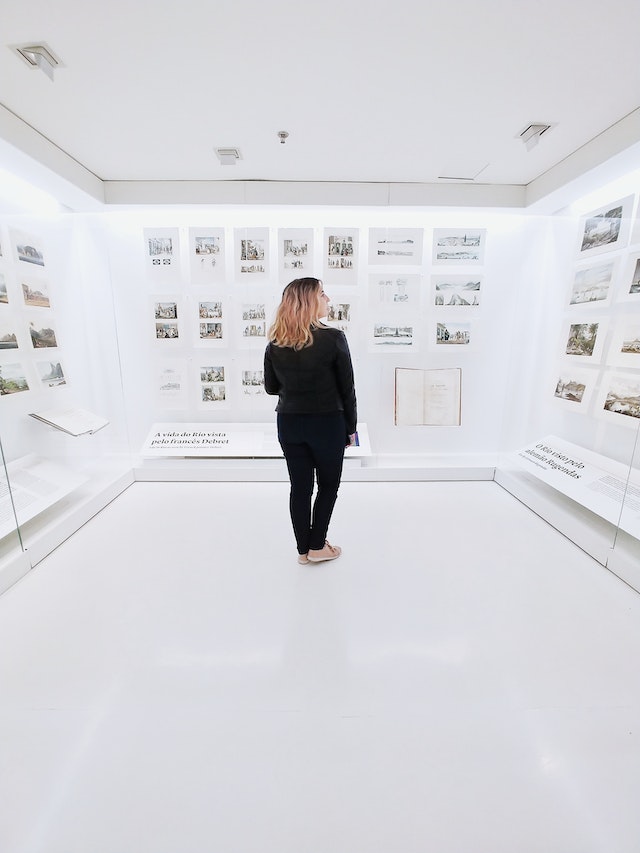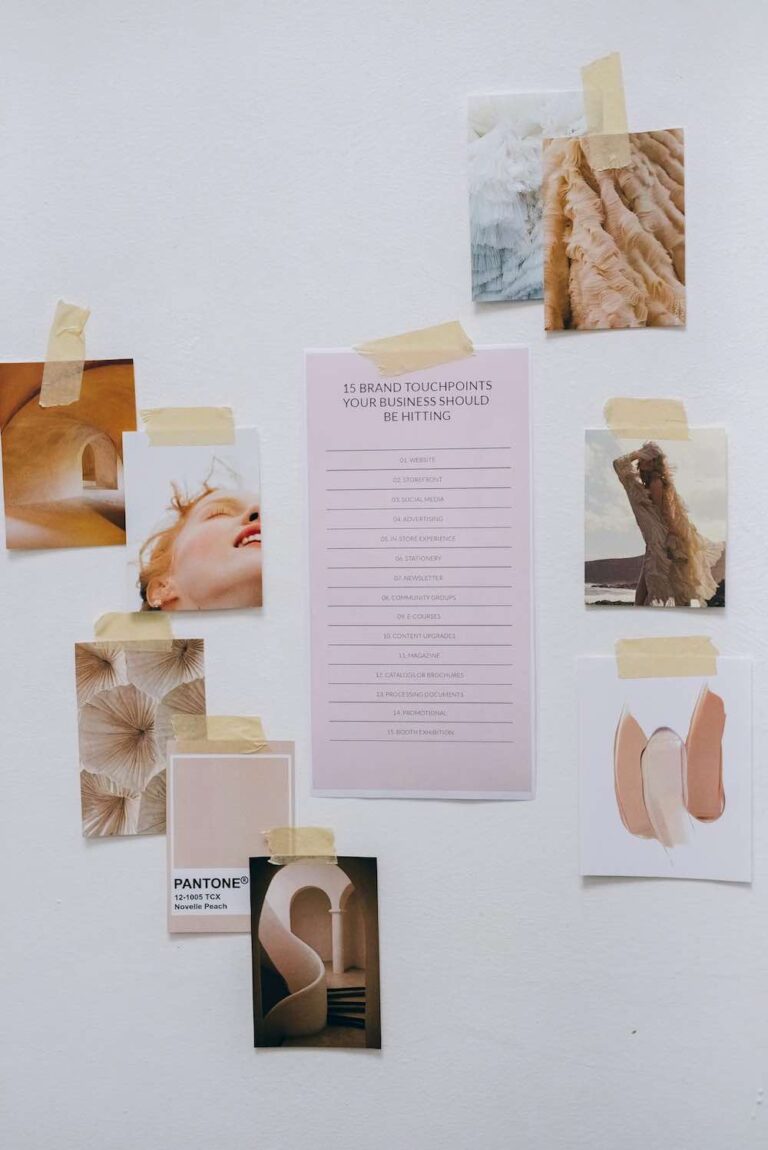How to catch the curator’s eye, proven tips for designers & makers who want to stand out

If you are interested in getting your work featured in high-profile exhibitions, bought by a collector or even having it become part of a gallery or museum’s permanent collection one of the main ways to do so has been to catch the curator’s eye.
Why do you need to rely on a curator when surely you can approach the event organisers or gallery or museum yourself? You could, however, the person you connect with is most likely to be… a curator. This is because the curator is the person responsible for maintaining a collection or organising an exhibition, and this includes buying or selecting relevant work. If you want to know more about the role of a curator read What is a curator, and what do they do? If you are starting out or are an established designer, maker, artist having a curator recognise your work can significantly boost your career prospects.
Catching a curator’s eye could be through the curator seeing your work and contacting you or you showing or sending them your portfolio of work. However, in a highly competitive industry standing out and catching the curator’s eye can prove challenging, so here are some essential tips to help you get their attention:
1. Understand what curators look for when selecting work
- Potential & Promise – Many curators are instrumental in the development of a designer, maker, artist’s work practice and career. If they can see your potential they will invest in helping you nurture it.
- A Strong Signature Style – A signature style is what helps a maker to stand out by making their work instantly recognisable in a crowded industry. A signature style is what will potentially make your work attractive to curators and collectors. It’s important to stay true to your unique style and vision, even if it doesn’t align with current trends.
- An Original Point of View – Curators are always on the lookout for fresh, innovative ideas, and showcasing your unique perspective can help you stand out from the crowd.
- A compelling story – Alongside the visual aspect of a maker’s work the story behind it will also attract a curator’s attention. A story is your why, your purpose, and the reason your work looks the way it does. A story helps the curator to better understand your work. Get help with crafting authentic brand stories here.
- Growth & Evolution – A curator doesn’t want to see the same thing from you over and over again year in and year out. They want to see that your craft skills and creativity are evolving and that your creativity is maturing.
- A CV – this could be a bio in the form of a traditional style resumé, your story, or a film to name a few mediums. Your CV must tell the curator who you are and what you do, along with all your relevant contact information. Also include any exhibitions you’ve been a part of, organisations you belong to, projects and collaborations you’ve worked on, awards won, grants received, press features and so forth.
2. Identify the curators who specialise in your craft, discipline or subject
Whether a curator approaches you or you approach them, it is good practice to be aware of the curators in your industry, in particular, those that specialise in your craft or subject matter. Curator’s tend to specialise in specific areas and disciplines, for example: female potters from rural communities, or post-modern mixed-media painters. So do your research to see if your work aligns with the aesthetic of the curator you’re interested in. Suggestions include making a note of the names associated with an exhibition, and looking at past exhibitions of the curators you’ve identified. This will help you determine if they are a good fit for your work. If it’s gallery representation you are after, take the time to research suitable galleries making anote of who the curator is. Get to know both established and upcoming curators, for example if you’ve identified a senior curator in a gallery also seek out the junior curator and the curator’s assistant as they are often tasked with finding suitable work for an up and coming exhibition.
3. Build a strong network
Networking is crucial in any industry, and the arts are no exception. Building relationships with individuals in the industry can provide you with valuable insights. It also means name, and your face start to become familiar increasing your chances of getting noticed through word-of-mouth recommendations and mentions. Ways to build your network include attending exhibitions and events, engaging with industry professionals and other designers, makers, artists both on and offline.
4. Promote your work
Getting your work noticed by a curator means having something for them to see. Curator’s relish the element of being one of the first to discover a new name. Promoting your work can be done digitally or offline. In this day and age having a website and supporting social media platforms is considered essential for the majority of designer, maker, artists, although it is possible to do away with online promotion. For online promotion find and use the relevant keywords and hashtags to help you get traction and increase organic discoverability. Offline promotion includes:
- Getting press coverage, which can create a ripple effect in increasing awareness as more and more people get to know about you. Here’s how you can create a strategy to get press for your work
- Showing up at craft markets and fairs. If you do the latter make sure the events align with the standard of your work because a low-quality event can negatively impact work
Consider joining a society, association or incubator for makers. These types of organisations can do a lot of heavy lifting when it comes to promoting your work to the curators in their networks.
5. Be proactive and contact curators yourself
Being proactive and contacting curators rather than waiting for them to contact you is another way to get their attention. If you’ve done your research, as outlined in point 2., there is no reason why shouldn’t reach out to curators and gallery owners to introduce yourself and your work. Doing so can make a curator’s life easier.
How to approach a curator
Starting with the obvious, follow them on the channels they use. This could be their website or social media platforms. The standard means of contact is to send an introductory email, DM’s are not typically preferred. Catching the eye of a curator requires persistence, but don’t be pushy by bombarding them with too many messages. Always be respectful, And don’t get discouraged if you don’t receive an immediate response, simply give them a gentle nudge by following up with a polite email or message.
5. Be professional
When presenting your work to a curator be professional. Always make sure your work is displayed in a professional and polished manner. A professional presentation will demonstrate that you take your work seriously and are committed to your craft. When a curator is interested they will ask to see examples of your work. In the first instance, this is typically done by presenting a portfolio of your work. Your portfolio must include high-quality images or physical examples of your work. Presenting your portfolio can be:
- Emailing photographs
- Some type of digital platform i.e. website or a social media page. If your website is your portfolio make sure it is up-to-date and easy to navigate
- In-person through a studio visit or an invitation to bring your work to their offices.
Catching the eye of a curator takes time. Do keep in mind that curators keep an eye on the market and will often watch a designer, maker, artist for a while to see how their work evolves. So…
6. Be patient
Getting a curator to notice your work takes time and effort. At times it may feel like you are invisible but you never know when a curator might come across your work and fall in love with it! By following these tips, being consistent in how you promote your work and cultivating your network you can increase your chances of catching the curator’s eye.
We hope you have found these tips useful to help you in your journey to catching the curator’s eye.
– The Wonderfully Well Made Team
[Image credits: The images shown belong to Cesar Hiar. If downloaded and used elsewhere please credit accordingly.]






